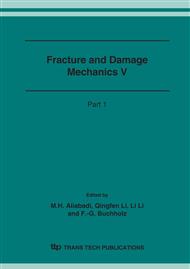p.627
p.631
p.635
p.639
p.643
p.647
p.651
p.655
p.659
Analysis of Cracking Phenomenon Occurring during Cold Forging of ML25Mn Steel
Abstract:
Cold forging has various advantages compared to other forming processing. Cracking phenomenon was taken place during cold forging of ML25Mn steel. In this study, microstructural analyses were made on the cracked regions of the steel. The reason of cracking phenomenon occurring during cold forging for ML25Mn steel was investigated based on SEM observation in detail. The results have shown that ML25Mn steel presents lower strength and toughness. A larger amount of inclusions which are composed of MnS and complex oxides containing Mg, Al, Mn, Fe, S, Ca and O are found, and the complex inclusion might be brought during the deoxidation and the solidification in smelting and casting. Non-metallic inclusions result in significant stress concentration, which cause cracking phenomenon occurring during cold forging of ML25Mn steel.
Info:
Periodical:
Pages:
643-646
Citation:
Online since:
November 2006
Authors:
Price:
Сopyright:
© 2006 Trans Tech Publications Ltd. All Rights Reserved
Share:
Citation:


